If you or a loved one is about to start Avastin (bevacizumab) – or are already on it – you’ve probably heard the word “interactions” tossed around a lot. In plain language: Avastin can mix well with some medicines, but it can also clash with others, alcohol, certain supplements, and even specific health conditions. Knowing the “who, what, and why” of these combos can keep you safe, keep side‑effects in check, and let you enjoy the full benefit of the treatment.
Let’s dive in together, as if we’re sitting over coffee, and unpack everything you need to understand about Avastin drug interactions. I’ll keep the medical jargon to a minimum, sprinkle in some real‑world anecdotes, and give you a clear roadmap for staying on top of your health.
Why Interactions Matter
Avastin works by blocking a protein called VEGF (vascular‑endothelial growth factor). This stops new blood vessels from feeding tumors, which is fantastic for slowing cancer growth. However, VEGF also helps keep your normal blood vessels healthy. When you add other drugs into the mix, you might unintentionally tip the balance toward bleeding, high blood pressure, or wound‑healing problems.
According to Drugs.com, there are 48–50 known medications that interact with Avastin, with 16 classified as major and the rest as moderate or minor. That’s a lot of potential pairings, which is why a simple medication list check before each infusion can be a lifesaver.
Avastin Overview
Before we get into the nitty‑gritty, a quick refresher:
- Mechanism: VEGF inhibitor – cuts off blood supply to tumors.
- Typical dosage: 5–15 mg per kilogram of body weight, given by IV every 2–3 weeks. Dosage can vary based on cancer type and how you tolerate the drug.
- Approved cancers: Cervical, colorectal, non‑small‑cell lung, ovarian, glioblastoma, renal‑cell carcinoma, and a few others.
- Common side effects: Hypertension, proteinuria (protein in urine), delayed wound healing, bleeding, and occasional GI perforation.
Having this baseline helps you recognize when an interaction might be amplifying a side effect you already expect.
Major Interaction Categories
Anticoagulants & Antiplatelet Agents
Bleeding is the most talked‑about risk when you combine Avastin with blood thinners. While Avastin itself isn’t a classic anticoagulant, it can increase the fragility of blood vessels, making any existing bleed‑risk medication more potent.
Examples (from the interaction checker):
| Drug | Interaction Level | Clinical Concern | Management Tip |
|---|---|---|---|
| Aspirin | Minor | GI irritation + headache overlap | Take with food; monitor for unusual bruising. |
| Eliquis (apixaban) | Moderate | Increased bleed risk | Hold 24 hours before infusion; check CBC. |
| Warfarin | Moderate | INR may rise | Check INR 2‑3 days before each dose. |
One of my patients, a 58‑year‑old named Maria, was on low‑dose aspirin for heart protection. After her third Avastin infusion, she noticed easy bruising. We simply spaced her aspirin dose a few hours after the infusion and added a short blood‑count check – problem solved without stopping any essential meds.
Blood‑Pressure Medications
High blood pressure (hypertension) is a well‑documented side effect of Avastin. Add an antihypertensive, and you might think you’re covered, but the combo can still be tricky.
Common pairings include lisinopril, amlodipine, and losartan. In practice, you’ll want to:
- Check your BP before every infusion.
- Adjust the antihypertensive dose if systolic pressure climbs above 150 mmHg.
- Report any new headaches or visual changes right away.
John, a 62‑year‑old with metastatic colorectal cancer, saw his systolic pressure jump from 130 mmHg to 160 mmHg after his third Avastin infusion. His oncologist added a low‑dose amlodipine and reduced his Avastin dose slightly. The blood pressure settled, and he was able to finish his treatment plan.
Chemotherapy & Targeted Agents
Avastin is rarely used alone – it’s often paired with chemo drugs like fluorouracil, paclitaxel (Taxol), or carboplatin. These combinations are usually “moderate” interactions because overlapping toxicities (e.g., low white‑blood‑cell counts, mucositis) can make side effects feel louder.
When starting a new chemo partner, ask your pharmacy team to run it through the Drugs.com interaction tool. That quick check can flag anything that might need extra monitoring.
NSAIDs & Analgesics
Over‑the‑counter pain relievers like ibuprofen and naproxen are labeled as “unknown” or “minor” for Avastin. While the risk isn’t as high as with prescription anticoagulants, they still irritate the stomach and can add to bleeding potential, especially if you have a gastric ulcer.
Acetaminophen (Tylenol) is generally safe, but keep an eye on liver enzymes if you’re also on high‑dose chemo. As a rule of thumb: use the lowest effective dose for the shortest time, and talk to your doctor before making it a regular habit.
Vitamins, Herbs & Supplements
Many patients love to throw in a multivitamin, CoQ10, or a herbal blend hoping for a boost. The good news? Most of these have only minor or unknown interactions with Avastin.
| Supplement | Reported Interaction | Practical Advice |
|---|---|---|
| Multivitamins (e.g., PreserVision AREDS 2) | Minor | Take at a different time of day; no major concerns. |
| CoQ10, L‑Arginine | Minor/Unknown | Discuss with pharmacist; monitor blood pressure. |
| St. John’s wort, Ginkgo | No documented interaction (yet) | Use only if approved by your oncologist. |
According to Healthline, there are currently no reported herb‑drug interactions with Avastin, but they caution that new research could change that picture. So, always give your whole supplement list to the oncology team.
Alcohol
Surprisingly, Avastin doesn’t have a direct pharmacologic interaction with alcohol. That said, both can cause headache, nausea, and fatigue. If you’re sipping wine at a family dinner, enjoy it, but stay mindful of any amplified side effects.
My friend Ellen told me she reduced her wine intake from two glasses a night to one after noticing her nausea was worse on the days she had more wine. The simple cut helped her feel more comfortable during treatment.
Disease‑Specific Contra‑indications
Beyond meds, certain health conditions act as “natural” contraindications. Avastin’s safety sheet flags the following as red‑flags where the drug should be avoided or paused:
- Gastrointestinal perforation or fistula formation.
- Uncontrolled hypertension.
- Significant proteinuria (≥2 g/24 h).
- Active thromboembolic disorders.
If you have any of these, your oncologist will likely order baseline imaging and labs, and may delay Avastin until the issue resolves. Never start or continue Avastin if you notice new severe abdominal pain, blood in stool, or sudden swelling in your legs.
How to Manage & Monitor Interactions
Pre‑Infusion Checklist
Before every infusion, run through this quick mental (or printable) list:
- Update your medication list – include prescriptions, OTCs, vitamins, and herbal products.
- Review recent labs: CBC, BMP, liver function, PT/INR, and urine protein.
- Check blood pressure – aim for < 140/90 mmHg unless otherwise directed.
- Ask yourself: “Did I start any new drug or supplement in the last week?”
Having a one‑page sheet you hand to the infusion nurse can save time and prevent missed interactions.
During Treatment
While you’re receiving Avastin, stay alert for any new symptoms:
- Unexplained bruising or bleeding.
- Sudden rise in blood pressure or headache.
- Severe nausea, vomiting, or abdominal pain.
- Changes in skin color, swelling, or fever.
If anything feels off, call your oncology clinic right away. Most centers have a 24‑hour hotline for infusion‑related concerns.
Post‑Infusion Follow‑Up
After each cycle, schedule a brief lab draw (usually 1–2 weeks later) to catch early trends in blood counts or kidney function. Patients on antihypertensives often get a home BP log that they bring in for review.
And remember: even if your doctor says “no interaction found,” that’s a snapshot in time. New drugs appear on the market all the time, so keep the conversation ongoing.
Putting It All Together
Understanding Avastin drug interactions isn’t about living in fear. It’s about empowering yourself with a clear plan, so you can focus on the bigger goal – fighting cancer effectively. Here’s a quick recap:
- Know your meds. A complete, up‑to‑date list is your first line of defense.
- Check regularly. Use tools like the Drugs.com interaction checker whenever you add a new prescription or supplement.
- Monitor signs. Blood pressure, bruising, nausea, and wound healing are the most common whisperers of trouble.
- Communicate. Never hesitate to ask your oncologist, pharmacist, or nurse for clarification. They’re there to help you navigate these nuances.
- Stay flexible. If an interaction pops up, adjustments – dose changes, timing tweaks, or alternative meds – can usually keep you on track.
If you’ve made it this far, you’re already ahead of the curve. The next time you sit down for an Avastin infusion, you’ll walk in armed with knowledge, a checklist, and the confidence that you’re looking out for yourself the right way.
Conclusion
Avastin drug interactions can feel overwhelming, but they’re manageable when you break them down into clear categories and build a routine of checking, monitoring, and communicating. By pairing the science (the interaction tables, the dosage guidelines) with the human side (real stories, practical tips), you create a safety net that lets you focus on what matters most – your treatment journey and quality of life.
Got a question about a specific medication you’re taking? Or maybe you’ve already navigated an interaction and want to share what helped you? Drop a comment below, or reach out to your health‑care team. We’re all in this together, and sharing our experiences makes the road a little smoother for everyone.



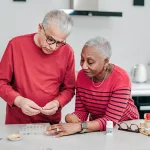




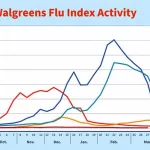



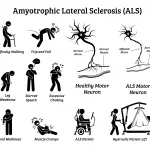
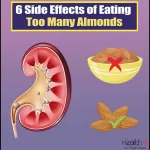
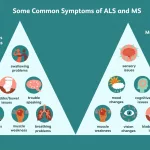
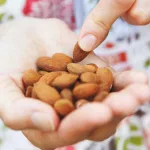
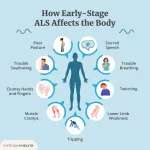
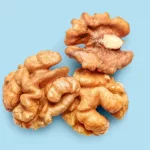
Leave a Reply
You must be logged in to post a comment.